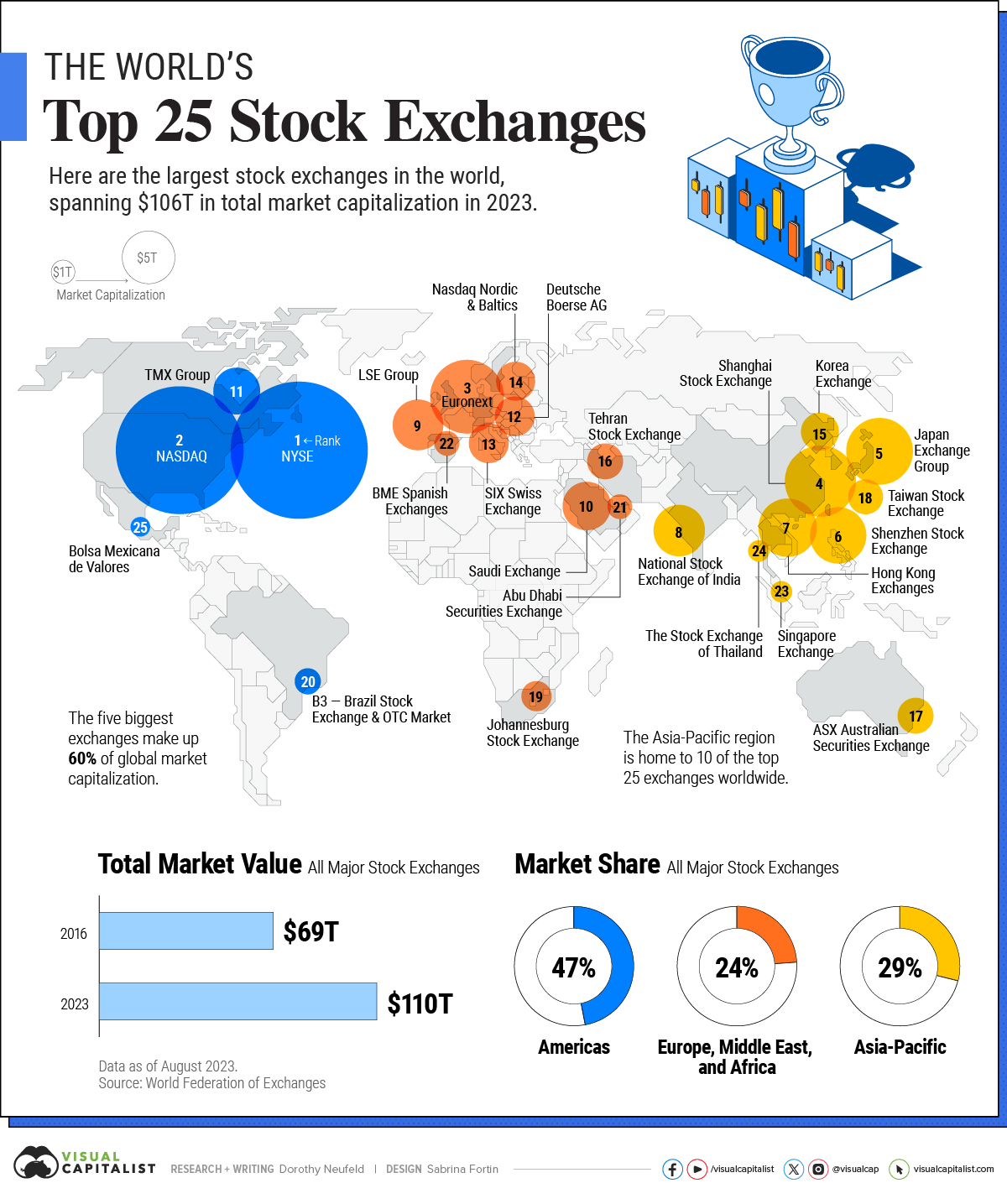One of the largest over-the-counter (OTC) companies, Citadel Securities, and a leading investment bank, BlackRock, have decided to fund the creation of a new stock exchange in Texas. It is intended to compete with the New York Stock Exchange (NYSE) and Nasdaq by offering significantly less bureaucracy, full digitalisation and predictable listing standards and costs. The creation of a new trading floor in the United States is a huge event. However, let's consider what more precisely we know about this initiative, what changes it could bring and how we can benefit from it by investing.
Table of contents:
Why Texas?
Texas Association of Business (TAB) president and CEO Glenn Hamer issued a statement in support of the creation of the Texas Stock Exchange (TXSE). The decision to create a new exchange stems from corporate dissatisfaction with the regulatory burden on the New York Stock Exchange (NYSE) and Nasdaq. Hamer points out that Texas is fast becoming a financial services hub thanks to pro-business policies put in place by the Texas government.
Home to 52 Fortune 500 companies, Texas seems an ideal location for a new stock exchange to compete with the NYSE and Nasdaq. Businesses choose Texas for its low taxes and lack of burdensome regulations. The state also leads in exports, foreign investment and job creation, three times the national average.
Hamer points out that the pro-business environment in Texas continues to grow, with new specialised business courts, college funding and a growing number of research universities. The TAB supports the initiative to create TXSE and recognises the financial leaders who are helping to solidify Texas' position as a leader in financial services.
Why is this such an important event?
The combined capitalisation of all stocks listed on the NYSE and Nasdaq represents $28 trillion, nearly half the capitalisation of all stock exchanges combined.

Source: VisualCapitalist
A new entrant that is more open to foreign IPOs, offers lower regulatory costs and lower fees could reshuffle much of the market and open up the US to capital that has not previously had the opportunity to debut in US markets.
Who will make money from TXSE?
The floor of the Texas Stock Exchange (TXSE) has declared that it has raised around $120 million from financial institutions such as BlackRock and Citadel Securities, among others. The fully electronic exchange will seek registration with the US Securities and Exchange Commission (SEC). TXSE plans to begin trading in 2025 and open for initial listings in 2026. We do not know the exact ownership structure of the new exchange, only we can guess that these two entities will benefit the most. But how much? Using the Nasdaq floor debut in 1971 as an example, the exchange's shares have gained more than 20,000 per cent since then, giving an average annual return of 10 per cent.
The stock price of Nasdaq inc.

Source: Macrotrends
BlackRock, which is one of the largest asset managers in the US and the subject of much theory and secrecy, may particularly benefit from this transaction, for example through exclusivity or preferential terms for offering its financial instruments such as ETFs.

Source: Conotoxia MT5, BlackRock, Daily
We are now left to await further information on the introduction of the Texas Stock Exchange, the creation of which seems to have been very positive news for most investors.
Grzegorz Dróżdż, CAI MPW, Market Analyst of Conotoxia Ltd. (Conotoxia investment service)
The above trade publication does not constitute an investment recommendation or information recommending or suggesting an investment strategy within the meaning of Regulation (EU) No. 596/2014 of April 16, 2014. It has been prepared for informational purposes and should not form the basis for investment decisions. Neither the author of the publication nor Conotoxia Ltd. shall be liable for investment decisions made on the basis of the information contained herein. Copying or reproducing this publication without written permission from Conotoxia Ltd. is prohibited. Past performance is not a reliable indicator of future results.
CFDs are complex instruments and come with a high risk of losing money rapidly due to leverage. 71,48% of retail investor accounts lose money when trading CFDs with this provider. You should consider whether you understand how CFDs work and whether you can afford to take the high risk of losing your money.







